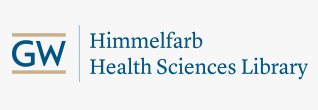Client and program-level factors associated with planned use of medications for opioid use disorder in specialty substance use treatment programs: Evidence from linked administrative data and survey data
Document Type
Journal Article
Publication Date
10-21-2024
Journal
Journal of substance use and addiction treatment
Volume
168
DOI
10.1016/j.josat.2024.209545
Keywords
Medication for opioid use disorder; Multi-level models; Specialty substance use treatment
Abstract
BACKGROUND: Most patients in specialty drug treatment programs that are not federally licensed Opioid Treatment Programs (OTPs) programs do not receive medications for opioid use disorder (MOUD). METHODS: We linked results from a survey of non-OTP treatment program directors in New Jersey (n = 81) to statewide administrative records of admissions for opioid use to those programs between July 2021-June 2022. Using multi-level regression, we examined the association of three types of factors with planned MOUD use: program survey responses, client-level factors, and program-level client characteristic mix. RESULTS: Of 9583 opioid treatment admissions in non-OTP settings, 41 % included treatment plans involving MOUD. Programs where directors reported staff concerns about buprenorphine's efficacy or diversion had a lower proportion of clients with planned MOUD, as did programs reporting too little physical space to prescribe. Being self-referred to treatment, unemployed and not looking for work, aged 30-49, heroin use (vs. prescription opioid use), and stimulant use in addition to opioids, were positively associated with planned MOUD; while non-Medicaid insurance, and Black and Hispanic race/ethnicity, were negatively associated with planned MOUD. Clients were more likely to have planned MOUD if their programs had a higher proportion of clients aged 30 or older, heroin as primary "drug of abuse," stimulant use, and not working but actively looking for work. CONCLUSION: Findings suggest addressing program staff attitudes toward buprenorphine could help increase planned MOUD. There is also a need to improve access for clients with non-Medicaid insurance, address within-program race and ethnic disparities, and address employment-related barriers to medication.
APA Citation
Feder, Kenneth A.; Li, Yuzhong; Burke, Kathryn N.; Byrne, Lauren; Desai, Isha K.; Saloner, Brendan; and Krawczyk, Noa, "Client and program-level factors associated with planned use of medications for opioid use disorder in specialty substance use treatment programs: Evidence from linked administrative data and survey data" (2024). GW Authored Works. Paper 5797.
https://hsrc.himmelfarb.gwu.edu/gwhpubs/5797
Department
School of Medicine and Health Sciences Student Works

